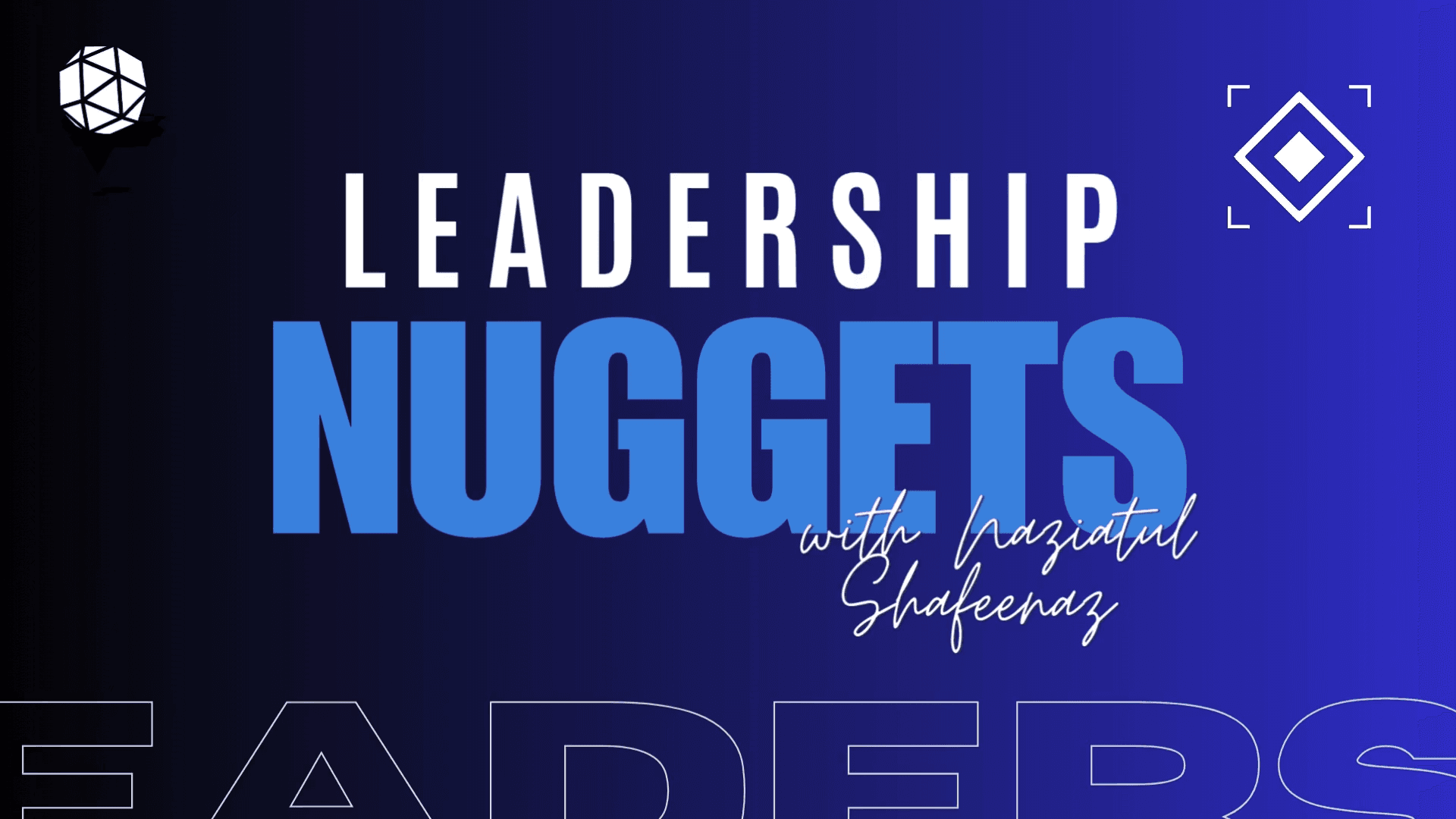Need Some Space?

How to connect back to yourself
Today’s world landscape is a widely interconnected one. Such complexity and connectivity have distracted us as to what is important and impacted our ability to lead with excellence. But, what are the marks of an excellent leader?
In Finding the Space to Lead by Janice Marturano, published this year, an excellent leader is a leader who can connect to self, others and larger communities; and someone who can skillfully initiate or guide change.
These traits are deeply rooted in four fundamentals of leadership excellence, but compounded with the challenges we often face in this modern age:
- Focus. Amidst demanding schedules, how do we maintain focus and sustain attention?
- Clarity. In a fast-paced business environment, how can we see situations clearly and respond appropriately?
- Creativity. Our constant stream of thoughts and task-based activities have stifled our creativity.
- Compassion. With the “me” and “I” generation, are we less involved with the wellbeing of those around us?
Mindful leadership
According to Marturano, a mindful leader embodies leadership presence by cultivating focus, clarity, creativity and compassion in the service of others.
Mindfulness training is a method of developing our mind’s natural capabilities to help us find the very thing we need most in our lives today: space, i.e. mental and emotional space.
When our minds are trained to be fully attentive, even in the midst of chaos, we have the space to make wiser and more conscious choices wherever we are placed.
There are three practical methods to mindful leadership mentioned in the book:
- Meditations
- Breath and sound meditation
We live in a state of continuous partial attention. As a result, the mind is constantly pulled in different directions, making us never fully attend to anything anymore.By practising this basic meditation to listen to our own sensations of breath, we cultivate and strengthen our innate capability to sustain attention. - Desk chair meditation
This practice is another way to cultivate our ability to pay attention. It is valuable to pick up important messages from our bodies that we often ignore or do not fully understand.With the information gathered, we can make simple choices to care for ourselves, such as doing a few more stretches to alleviate a sore back. - Thoughts and emotions meditation
The next step in training the mind is to use thoughts and emotions as objects of attention. This meditation exercise helps us understand the process of thinking.For thoughts as objects of attention, it allows our minds to rest in the awareness of thinking so that there is room for us to see things more clearly.On the other hand, for emotions as objects of attention, we allow ourselves to honestly experience a wide range of emotions we are capable of feeling.
- Kindness meditation
It is vital to understand that we all aspire to the states of being safe, strong, happy and living with ease. This practice opens our hearts and can put us in touch with our own needs and the needs of others at a very basic level.Kindness comes from compassion, an authentic connection to others and the pain and joy people feel. Compassion opens the door to the connection between our minds and hearts. As Pir Vilayat Inayat Khan, a Sufi teacher, once said:“The mind is the surface of the heart, and the heart is the depth of the mind.”
- Breath and sound meditation
- Reflections
- Reflection on leadership excellence
When we allow ourselves time to reflect on the qualities of a person whom we believe embodies leadership excellence, our list will most likely be “respectful”, “kind”, “patient”, “inspirational” and “great listener”, instead of “consistently meets quarterly numbers”.This goes to show that what sets people apart as excellent leaders is something much more than quantitative metrics. - Reflection on leadership principles
An important element within the practice of mindful leadership is coming to a deeper understanding of ourselves. With that, understanding our own leadership principles is a key part of that self-awareness.Knowing how these principles define us is a compass that will guide us when faced with difficult choices.Similarly, the leadership principles identified by an organisation are guidelines for how the senior leadership will steer the company to success.
- Reflection of inspiration
People generally thrive on what inspires them, not merely what is expected of them. Mindful leadership training helps us discover the deeper inspirations that drive us, so that we too can inspire others with our passion.In the example of Mayor Rudy Giuliani’s leadership, the then mayor of New York City (NYC) has always prioritised the need to show up in tough times to offer comfort. To him, being present when people were in pain was the true measure of a person.As a result, his principle has inspired his administrative team to attend every funeral for an NYC employee who died in the line of duty following the Sept 11, 2001 attacks.
- Reflection on leadership excellence
- Purposeful pauses
- Basic purposes pause
Our lives are unlikely to lose complexity anytime soon but we can create moments of space to breathe by regularly taking a purposeful pause.As we take this purposeful pause, we might notice our minds returning to the present and letting go of thoughts that were crowding out our capacity.When distractions of the past and present are reduced, we can see more clearly at that moment and then with greater awareness, choose what to pursue next.
- Mindful meeting
Mindful meeting involves mindful communication that concerns listening to ourselves and listening to others. The way to learn mindful communication is by consciously applying it to the everyday situations encountered in our work and personal lives.Keep in mind that we lose something important when we are not fully present for an encounter with people we are close to, thus losing the precious opportunity to understand and to be understood. - Letting go of expectations
This method invites us to pay attention to the thoughts and emotions that may arise as we take a few moments to look at the substance of our day’s meetings.With such purposeful pause, we become open and curious about new possibilities rather than going through the motions of moving immediately into the planning, executing, taking charge and assigning of tasks.
- Basic purposes pause
The ripple effect
Everyone has the capacity to lead with excellence. Just as we throw a pebble into a still pond to create ripples throughout the whole pond, so can leadership presence go beyond the effect it has on us alone. It can influence families, friends, the organisation we work within, the community we live in and potentially the world at large.
Essentially, we need mindful leaders who not only understand themselves but who are unafraid to be open-hearted and make ethical choices even in a crisis.
We just need to start finding that space through mindful leadership to be fully there (body, mind and soul!) at that present moment.
My thoughts
This is a practical book for those who constantly have their plates full, resulting in you finding it a challenge to do something that matters most in your life.
You may be an executive who is working hard to achieve work-life balance but have been unable to do so. Instead, you find yourself on the verge of a burnout.
Or, you may be a parent who is trying to do the best you can to nurture your children but find it hard to be kind to your own emotional and spiritual needs.
In the chaos of life, when you forget how to become human beings again because of our obsession with the “doings”, then I would highly recommend you to take a step back and read this book to connect to your inner self again.
Finding the Space to Lead: A Practical Guide to Mindful Leadership by Janice Marturano is distributed by Penguin Books Malaysia and is available in all leading bookstores. For feedback of this book review, drop Lay Hsuan an email at layhsuan.lim@leaderonomics.com . For more book reviews, click HERE!
Leadership





